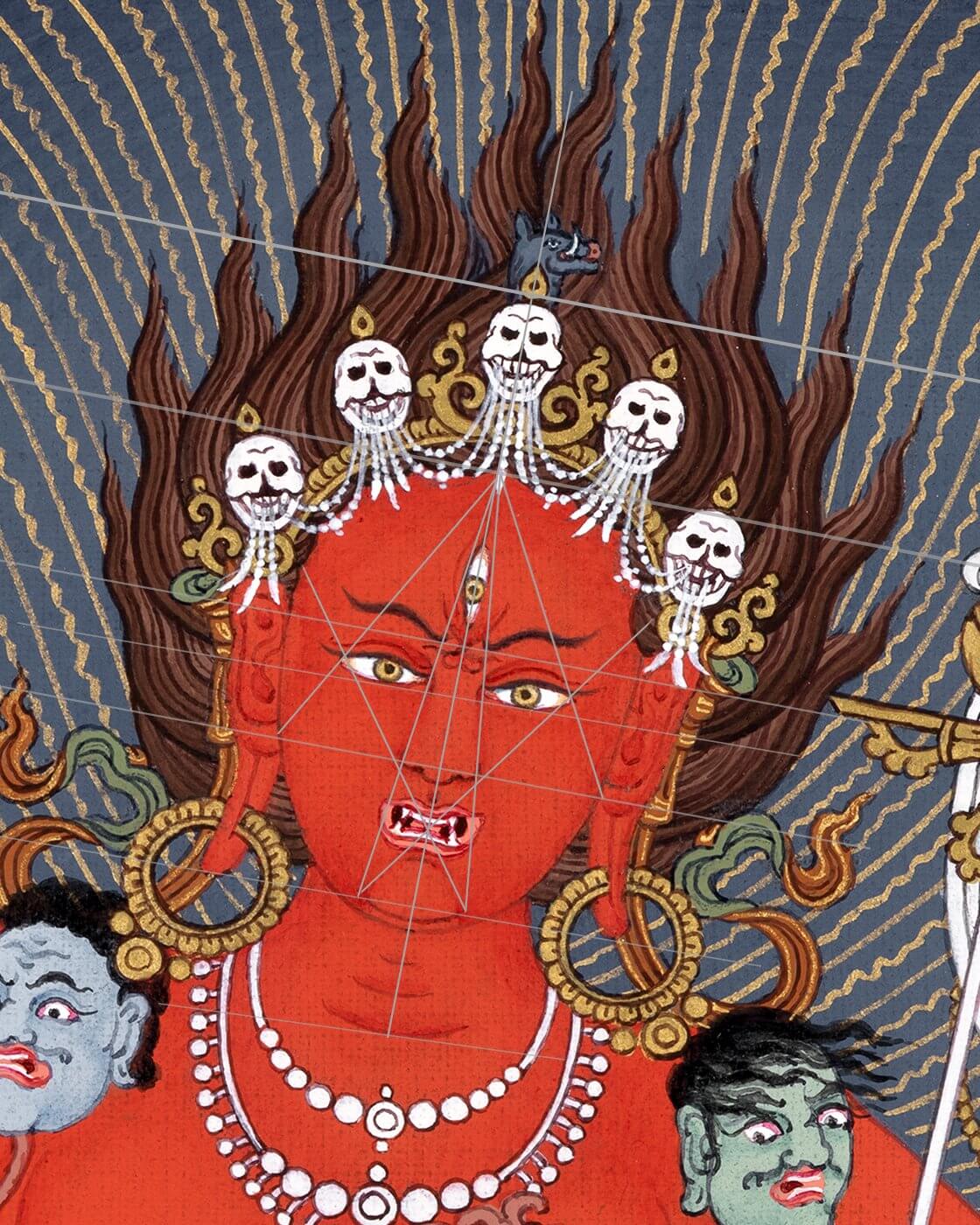"Sacred art is not just a representation of symbols and ideas. It is a direct experience of inner peace, free from attachment to the illusory solidity of the ego and the phenomenal world" ~Matthieu Ricard
An art form is truly sacred when it awakens in the mind. A direct experience that is deeper than our ordinary selves and the material world.
In Buddhism, the essence of a fundamental quality of mind is one. The mind is in a state of peace and lucid clarity, something that lies beyond our thought process.
This transcendent state of mind is the Buddha-nature, the primordial wisdom. The primordial wisdom and compassion are always present within every sentient being. But they are overruled by ignorance. Ignorance is not only a lack of knowledge but a consistent apathy towards the true state of mind.
In fact, it is ignorance that divides things into self and others, near and far, good or bad. It sees things as having a true, substantial existence.
But, primordial wisdom sees that the nature of everything is emptiness. Also called Shunyata, it is the view of emptiness. All phenomena are devoid of intrinsic, autonomous, and permanent existence.
Although it might at first seem a nihilistic view of the world, this is far from being the case. Emptiness does not imply nothingness. Rather it refers to the infinite potential for phenomena to appear in a vast network of interdependent processes. It would be impossible if everything consisted of inert, immutable, self-contained entities.
So, how to understand the Wrathful Deities and their gruesome appearances?
The focus of many contemplative practices in Tibetan Buddhism.
"Wrathfulness is a way of depicting the formidable energy of compassion that cannot bear the sufferings of beings. There is no trace of hatred or anger in it".
Simply, it is a way in which the peaceful free nature of primordial wisdom manifests. A very dynamic way is required to beings from particular kinds of suffering.
The following symbolisms associated with the wrathful deities will make this view clearer.
-
The hair bristles upward in a blazing mane. Out of overwhelming compassion for the intense suffering of beings caught up in delusion.
-
If they have only 1 head, it symbolizes the absolute truth. If they have 3 heads, they represent the three dimensions of Buddhahood Trikaya. The transformation of the three main mental poisons-Desire, Anger, and Ignorance.
-
Their 2 arms represent the union of wisdom (the realization of emptiness) and skillful means (compassion). If they have six arms, these are to remind us of the six transcendent perfections (Paramita). Namely: Generosity, Discipline, Patience, Diligence, Concentration, and Wisdom.
-
Their two legs represent absolute space (dharmadhatu) and awareness (vidya), inseparable. If four, they symbolize the four boundless qualities-Love, Compassion, Joy, and Impartiality.
-
The 58 dry skulls that some wrathful deities wear symbolize the death of the 58 kinds of deluded thought.
- Their razor-sharp wings symbolize penetrating wisdom.
- Their 3 eyes symbolize perfect knowledge of the Past, Present, and Future.
-
These deities are not seen as having material, tangible bodies of flesh, blood, and bone. But the bodies are of light, vivid and translucent like a rainbow. Totally immaterial, like the reflection of the moon in the water.
Wrathful deities are full of wisdom and love and the power to reduce pain. There are many meditational deities that have both peaceful and wrathful forms.
The wisdom-wrath of these deities, therefore, symbolizes the conquest of hatred and the other mental poisons. These poisons create suffering for both ourselves and others as well.
It is said that the demon Rudra was the embodiment of all the negativity of the human mind. He was subjugated by the wisdom deities Hayagriva and Vajrapani. As a sign of victory, Hayagriva and Vajrapani clad themselves in the accouterments of the vanquished demon. This shows that wisdom always lies deep within ignorance and love behind the hideous face of hatred. And compassionate strength is behind the blind violence.
To reach enlightenment, one should perceive all forms as the manifestation of primordial purity. All sounds as the echo of emptiness and all thoughts as the play of wisdom. One does not require distinguishing between beautiful and ugly, harmonious and discordant.
Beauty is everywhere and one is fulfilled and serene all the time.
Ordinary beauty is a source of joy, but spiritual beauty has a unique value. It inspires in us the conviction that enlightenment both exists and can be attained.
A sacred art always seeks to express this beauty, whether the mode of expression is music, dance, painting, or simple contemplation.





2 comments
Tenzin
I am also practicing the wrathful deity and find it very challenging.
www.tantramassageamsterdam.net
Christina Vonthronsohnhaus
I always thought that they were like guardians guarding you on the path or warning you that you are about to go astray . Like in the bardo. but this teaches me a new way . Thank you!